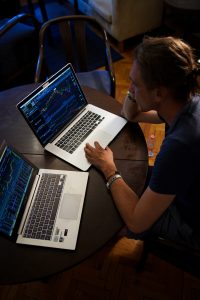Forex trading is often regarded as one of the most lucrative forms of investment, especially if you have a good understanding of the market and are willing to take calculated risks. One of the most important aspects of forex trading is setting a take profit (TP) level, which is the price at which you want to close your position and lock in profits.
However, there are times when the price of a currency pair may exceed your TP level, leaving you with less profit than you anticipated or even a loss. In this article, we will explore some of the factors that can cause the price to go past your TP in forex trading.
1. Market Volatility
One of the primary reasons why the price may go past your TP in forex trading is due to market volatility. Volatility refers to the degree of price fluctuation in a market over a given period. When the market is highly volatile, it means that prices are fluctuating rapidly, which can make it difficult to predict price movements accurately.
In such situations, a sudden surge in the price of a currency pair can cause it to surpass your TP level before you have a chance to close your position. This occurrence is more common during news releases or events that can have a significant impact on the market, such as economic data releases, political announcements, or unexpected news.
2. Slippage
Slippage refers to the difference between the expected price of a trade and the actual price at which the trade is executed. It often occurs during times of high volatility when there is a significant increase in the number of orders being executed.
For instance, if you set a TP level at a specific price, but the market suddenly becomes highly volatile, the execution of your trade may be delayed or executed at a different price than you anticipated. In such a scenario, the price may move past your TP before your trade is executed, resulting in a lower profit or even a loss.
3. Stop Loss Hunting
Stop loss hunting is a practice where market makers or brokers deliberately manipulate the market to trigger stop loss orders. This practice is highly unethical and is often used to take advantage of inexperienced traders who set their stop loss orders too close to the current market price.
In such situations, market makers or brokers may push the price of a currency pair below the stop loss level, causing the trade to close at a loss. Once the stop loss orders have been triggered, the market makers or brokers may then reverse the price movement, causing the price to surge past the TP level, resulting in a missed opportunity for the trader.
4. Overtrading
Overtrading is a common mistake made by novice traders who are eager to make quick profits. It refers to the practice of opening multiple trades without adequate analysis or planning, often resulting in losses.
In such situations, traders may set TP levels based on unrealistic expectations or without considering market volatility, resulting in missed opportunities or lower profits. Overtrading can also lead to emotional trading, where traders become too attached to their trades and fail to take profits when they should, resulting in missed opportunities or losses.
Conclusion
In conclusion, there are several factors that can cause the price to go past your TP in forex trading, including market volatility, slippage, stop loss hunting, and overtrading. To minimize the risk of such occurrences, traders should always be aware of market conditions and set TP levels based on realistic expectations.
It is also essential to use reliable brokers with good execution speeds and avoid overtrading, which can lead to emotional trading and poor decision-making. By following these tips, traders can improve their chances of success in forex trading and avoid the disappointment of missed opportunities or losses.






